Supply Chains:
On this page
Prepared by the New Zealand High Commission in Ottawa.
Rāpopoto – Summary
Budget 2021 announced in April outlined some of the current Canadian governments funding priorities related to economic recovery from the pandemic, building off the fall economic statement and the climate action plan from late 2020. Once wage and rent subsidy programmes wind up on 23 October, Canadian fiscal measures will be broadly focused on supporting SMEs (through various programmes) by helping them adapt to a post-covid world, stimulating innovation in green technology and creating a more inclusive economy. Forward looking fiscal policy sits alongside an ambitious climate change package – elements of ‘green recovery’ are intertwined.
Pūrongo – Report
Note: all figures are in Canadian dollars (CAD).
Canada is currently in the middle of a federal election campaign (launched on 15 August, with election day on 20 September).
Current status of Canadian economy
With over 75% of the eligible population being fully vaccinated, the Canadian economy has been re-opening across provinces and territories over the past few months. A strong rebound was reported at the beginning of 2021 following significant losses in 2020, but has since slowed through spring and summer. Statistics Canada(external link) reported on 31 August that real GDP unexpectedly fell 0.3% in the second quarter of 2021, and exports were down 4% (the Bank of Canada has attributed this to supply chain problems). The same data showed that the economy shrank by 1.1% on an annualized basis in the second quarter, which was 3 percentage points below the Bank of Canada’s forecast. Sectors most severely impacted by restrictions (such as accommodation and food services) continue to have a modest recovery with small monthly increases. Overall, 15 of 20 industrial sectors are currently reporting increases (0.7% for services and 0.9% for goods in August 2021), with reported decreases in manufacturing, construction and retail trade.
Canada opened its border to vaccinated US travellers on 9 August, and to all vaccinated travellers on 7 September 2021. Destination Canada(external link) estimated that in 2019, there were nearly 15 million visits from the US into Canada, resulting in $11 billion in spending (compared to 2020, when there were just under 2 million visits).
The large spending packages announced in Budget 2021 (in April) extended and provided further support to business. Wage and rent subsidy programmes are set to conclude on 23 October, meaning the next few months will provide a different outlook on the ‘post pandemic’ Canadian economy. In terms of monetary policy, Government bond buying has been reduced to $2 billion a week, from $5 billion a week at the beginning of the pandemic. However, the Bank of Canada announced this week that it would hold interest rates steady, the same decision that it made in July 2020 – keeping monetary policy neutral during the election campaign.
Canada opened its border to vaccinated US travellers on 9 August, and to all vaccinated travellers on 7 September 2021.
The labour market added 90,000 jobs in August, dropping the unemployment rate to 7.1%, from 7.5% in July. There has been a fair amount of month-on-month volatility in the employment data in recent months, reflecting the re-imposition and removal of pandemic-related restrictions in different provinces. However, the overall trend is that the economy is steadily making up the jobs that were initially lost — as of July 2021, 2.74 million of the 3 million jobs lost in 2020 had returned.
Measures to lift productivity growth
Budget 2021 included substantial announcements related to COVID-19 recovery, including $12.1 billion towards programmes and funding supporting jobs and businesses. Most of this was focused on maintaining current business levels and sustaining SMEs through the second and third waves. $10.1 billion was put towards the continuation of the wage subsidy, $1.9 billion for the rent subsidy and $78 million for the Canada Emergency Business Account (CEBA), which provides loans of up to $40,000 to SMEs.
New initiatives included $595 million for the Canada Recovery Hiring Program (CRHP), running from 6 June to 20 November to assist businesses to rehire laid-off employees, or hire new workers. Other measures to help accelerate the digitalisation of the economy included $4 billion for the Canada Digital Adoption Program(external link) (CDAP) to “boost SME’s e-commerce presence and digitize how they run their businesses behind the scenes”. The funding is stated to directly help over 160,000 businesses, and provide new jobs for 28,000 young Canadians to train businesses to make the most of new technology. There are two streams of support from CDAP, the first titled ‘grow your business online’ (applications were open for a month, and closed on 6 August) and the second ‘boost your business technology’ (applications have not yet opened).
Budget 2021 included substantial announcements related to COVID-19 recovery, including $12.1 billion towards programmes and funding supporting jobs and businesses.
The federal government launched the ‘Innovation Superclusters Initiative’(external link) in 2017. This focuses on five industries (digital, protein[1], advanced manufacturing, AI and oceans), providing capital towards their development – and funding from the latest budget has been added to incentivise projects(external link) coming from superclusters related to COVID-19 recovery.
The Budget also included an increase of $560 million to the Canada Small Business Financing Program(external link), aimed at supporting an additional 2,900 businesses. Restrictions on application requirements were lifted in a move to enhance productivity – expanding loan class eligibility, increasing the loan amount to $500,000, extending the loan coverage period and introducing a new line of credit product.
Transitioning to a low-emissions economy
Having passed the Canadian Net-Zero Emissions Accountability Act on 29 June, the new Canadian NDC is 40-45% below 2005 levels by 2030. The policies in place to support this are outlined in the Climate Plan titled ‘A Healthy Environment and a Healthy Economy’(external link). Headline policies announced within it include $15 billion in funding, through five pillars to support the transition to a low-emissions economy:
- Energy efficiency (retrofits - $2.6 billion for homes, $1.5 billion for community buildings and $2 billion for commercial buildings – applying to both existing and new builds);
- Clean transport and power ($287 million incentivising electric vehicles, with an accelerated target date for 100% sales of electric vehicles in Canada by 2035; $150 million for charging stations and $300 million for renewable energy solutions to rural communities);
- Price on carbon (rising by $15 per tonne of carbon annually from 2023 onwards, to $170 per tonne by 2030);
- Industrial advantage (incentivising clean business through $3 billion over five years into a Net Zero Accelerator within the Strategic Innovation Fund; 50% tax cuts for companies building clean domestic industries through green technology);
- Conserving, restoring and managing nature ($3.16 billion to plant two billion trees and $631 million to restore natural spaces like agricultural lands).
The plan outlines the focus areas of the net zero accelerator – supporting development and adoption of clean technology solutions in all industrial sectors (but more specifically the aerospace, automobile and battery innovation industries).
[1] This supercluster(external link) is focused on plant-based meat alternatives, plant genomics and increasing the value of key crops such as canola, wheat and pulses.
More reports
View full list of market reports.
If you would like to request a topic for reporting please email exports@mfat.net
Disclaimer
This information released in this report aligns with the provisions of the Official Information Act 1982. The opinions and analysis expressed in this report are the author’s own and do not necessarily reflect the views or official policy position of the New Zealand Government. The Ministry of Foreign Affairs and Trade and the New Zealand Government take no responsibility for the accuracy of this report.

